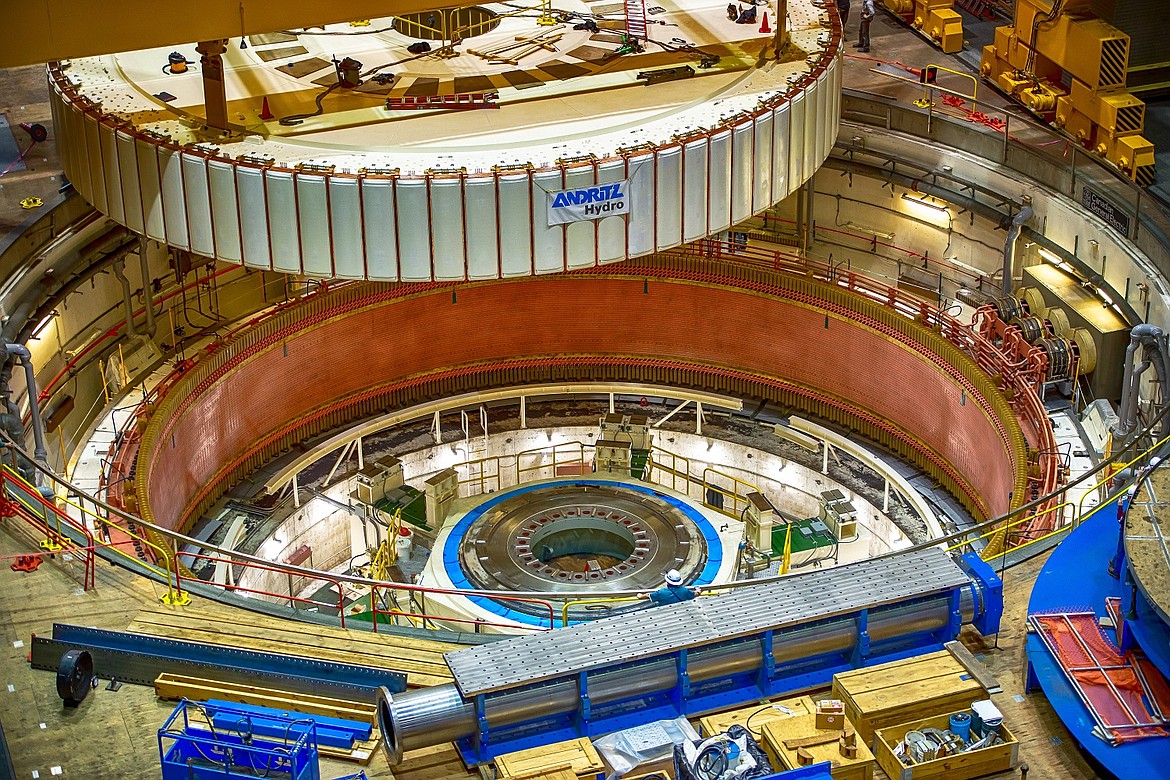Grand Coulee Dam overhaul ensures 30 more years of service
The Bureau of Reclamation and the Bonneville Power Administration recently announced a long-running overhaul of three generators at the Grand Coulee Dam was completed in September 2021, according to a press release from both agencies.
“All of these facilities were built between the late 1930s and the 1970s, so being that the newest of them were built 50 or so years ago, the system is aging. We have to systematically, in accordance with our strategic asset management plan, work with – in this situation – the Bureau of Reclamation and in other situations, the Army Corps of Engineers to determine which of these units we need to work on, which need to be maintained and on what schedule. It’s all to ensure that we can provide quality, carbon-free energy to those public utilities in the Northwest that rely on us to do so,” said Doug Johnson, spokesman for the Bonneville Power Administration.
Bureau of Reclamation Public Affairs Specialist Erika Lopez said no federal or state funds were used in the project.
Johnson said funding for the project came from ratepayers who pay for electricity through BPA or one of its electrical service providers, such as rural electric cooperatives, public utility districts and other similar organizations throughout Washington, Oregon, Idaho and Montana. He added even with the added maintenance cost, BPA was able to lower its base rates to those providers.
“We did provide a 2.5% reduction in the wholesale rate average that we charge utilities in the Northwest and Grand Coulee (Dam) is a big part of the reason we could do that, along with the other 30 federal dams and the nuclear plant,” Johnson said.
Those rates are locked in for the remainder of the current BPA fiscal year, which began in October and runs through September, as well as the following fiscal year. Therefore, the reduced rate is effectively locked in through September of 2023, Johnson said.
According to the press release Dec. 20, project planning began in 2008 and involved the refurbishment of power generators G22, G23 and G24. Disassembly of the units began in March 2013 and carried through until Sept. 30, 2021, when all three units were back online. Before that, work on G24 and G23 was completed in 2016 and 2019, respectively. During the project, the three 805-megawatt generators were completely dismantled, and parts were cleaned or replaced, as needed to ensure proper operation. This involved the removal and replacement of about 32,500 tons of steel for each unit. The work is expected to keep the three generators, all of which are part of the Nathaniel “Nat” Washington Power Plant, another 30 years or more of service.
“Overhauling something of this magnitude does not happen overnight; it takes years of planning and strong partnerships to complete such a milestone,” said Bureau of Reclamation Columbia–Pacific Northwest Regional Director Lorri Gray. “The overhaul of these units is key to accomplishing Reclamation’s mission and represents one of the most significant infrastructure investments in the region’s recent history. This overhaul enables us to optimize Coulee’s performance as one of the most coveted clean energy assets in the world.”
The three generators are part of a system integrated into the Grand Coulee Dam, providing more than 6,800 megawatts of energy and in the course of a year can provide more than 20 billion kilowatt-hours of electricity to the Pacific Northwest. It is one of 31 federal dams providing more than half of the hydropower in the Northwest, according to the press release.
Individually, Grand Coulee Dam accounts for about 7% of the region’s hydroelectric power, Johnson said.
A dependable electrical system is vital for the Pacific Northwest, Johnson said. Avoiding outages, such as the one suffered by Texas in February 2021 is important for the safety of those who call the region home.
“That’s an important commitment for a facility like Grand Coulee (Dam), you know? Grand Coulee is kind of a jack of all trades in our system when you talk about the amount of energy it can provide. That’s just the tip of the iceberg of what Grand Coulee offers. We hold operating reserves there,” Johnson said. “We can use it to move up and down with the wind fleet that’s connected to our transmission system. We can relieve transmission congestion at times by moving the plants’ output up and down. It is an incredibly important facility in addition to being a historic landmark in the Pacific Northwest.”
For more information on Grand Coulee Dam, visit the links below.
Overhaul: https://on.doi.gov/3pS7uIG
Visitors’ Center: https://on.doi.gov/3FWG5ea
Facebook: https://bit.ly/GCDamFacebook





